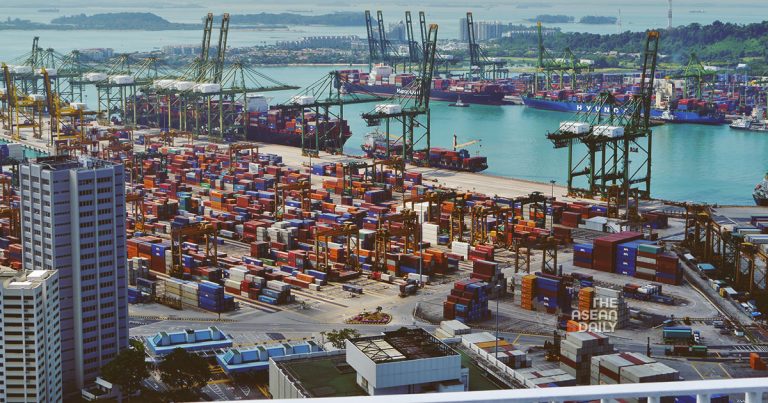17-1-2024 (SINGAPORE) Singapore experienced a setback in its key exports in December as electronics and pharmaceuticals faced challenges, leading to a 1.5% year-on-year contraction in non-oil domestic exports (Nodx), according to data from Enterprise Singapore (EnterpriseSG) released on January 17. This fall defied analysts’ expectations of a 3% growth, as outlined in Bloomberg’s consensus forecast.
In November, there was a brief respite when Nodx entered positive territory with a 1% increase after a 13-month decline. However, the latest figures indicate a return to contraction, culminating in a disappointing full-year performance. Economists note that Singapore’s Nodx contracted by 13.1% in 2023 compared to the previous year, marking its worst annual showing since 2001. The recovery of the Republic’s exports is anticipated to be gradual and fragile, with a somewhat bumpy road ahead in the near term.
The decline in December’s Nodx was primarily driven by an 11.7% drop in electronics exports from a year ago. Although an improvement from the 12.8% contraction in November, this marks the 17th consecutive month of decline for electronics shipments, constituting about a fifth of Singapore’s Nodx.
Personal computers, accounting for nearly 10% of electronics Nodx, played a significant role in the downturn, experiencing a 34.3% decline from a year ago. Integrated circuits (ICs), comprising about half of electronics Nodx, also contributed to the decline, contracting by 7.9%. Notably, this is the IC sector’s slowest pace of decline since the third quarter of 2022, attributed to a recovery in global semiconductor sales.
Conversely, non-electronics exports grew by 1.4% year on year, marking a second consecutive month of growth but a decline from the 5.2% increase recorded in November. The slower pace of growth in pharmaceutical exports, which grew by 56.9% year on year in December compared to 118.9% in November, contributed to this dip.
Singapore’s top 10 export markets witnessed an overall decline, with exports to Taiwan, South Korea, and Japan leading the fall. However, exports to China, Hong Kong, the European Union, and the United States saw an increase. Exports to the EU, in particular, grew by 8.6%, reversing the previous month’s decline of 21.7%.
Selena Ling, Chief Economist and Head of Global Markets Research and Strategy for OCBC Bank, remarked, “Demand conditions from the major economies appear to be steadying, but regional demand conditions still look slightly shaky for now.”
UOB senior economist Alvin Liew and associate economist Jester Koh observed a shift in Singapore’s Nodx dynamics in 2023, with the US, China, and the EU growing their share while Asean economies such as Indonesia and Malaysia saw a decline. Notably, the US surpassed China as the Republic’s top Nodx destination, accounting for 21.2% of these exports.
Economists expect Singapore’s Nodx to return to positive growth in 2024, citing a low base in 2023 and a nascent recovery in electronics demand. The purchasing managers index (PMI), especially the manufacturing PMI, signals optimism for the Republic’s overseas shipments, with new export orders improving for the seventh straight month in December.
While the outlook for 2024 is cautiously optimistic, external risks and uncertainties temper expectations. DBS economist Chua Han Teng noted, “The global economic environment remains uncertain, due to high interest rates in advanced economies, a bumpy recovery in China, and lingering geopolitical tensions that could disrupt supply chains.”
OCBC’s Selena Ling highlighted the slightly challenging near-term Nodx outlook, pointing to global supply chain complications, including ongoing tensions in the Red Sea and the Israel-Hamas conflict.
Maybank economists Chua Hak Bin and Brian Lee suggested that December’s unexpectedly weak Nodx performance could be aggravated by supply chain disruptions from tensions in the Red Sea and the drought in the Panama Canal, causing delays and a rise in logistics costs.
In November, EnterpriseSG had predicted Singapore’s Nodx to grow between 2% and 4% in 2024.




